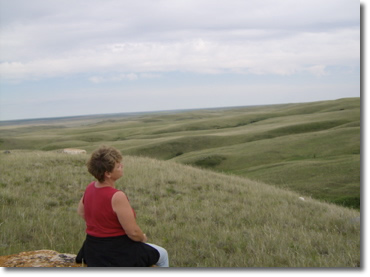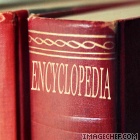Obtaining Background Knowledge
Reading, Listening, Talking, Viewing: Getting the Big Picture
 Obtaining background information is a stage that is often neglected in the research process. Students have a great deal of difficulty formulating a solid research question without sufficient knowledge about a topic. This stage of the inquiry process encourages students to become experts on their topic by reading, viewing, listening and talking to people about their topic. Allowing and encouraging sufficient time in this stage of the research process will enable students to narrow and focus on one particular aspect of their topic.
Obtaining background information is a stage that is often neglected in the research process. Students have a great deal of difficulty formulating a solid research question without sufficient knowledge about a topic. This stage of the inquiry process encourages students to become experts on their topic by reading, viewing, listening and talking to people about their topic. Allowing and encouraging sufficient time in this stage of the research process will enable students to narrow and focus on one particular aspect of their topic.
The activities in this stage of the process include collecting resources, examining bibliographies, creating working bibliographies that can be referred to later and reading, viewing, listening and talking to obtain a general overview of the topic. At this time the researcher is looking for key words, dates, people and events that will allow for other connections within the research. Student should read, look for major features and aspects of their topic and write them down.
Students can begin to get an overview of their topic by using general sources such as their textbooks and encyclopedias.
As students become more knowledgeable about their topics they will find it is easier to be focused and to generate good questions that will allow them to delve into further, meaningful research.
Documenting, Organizing and categorizing information:
During this time students should be keeping track of the resources that they have found. There are excellent online citation tools that allow them to document all bibliographic data as they go along and social bookmarking tools are an excellent way to collect, organize, evaluate and share web sites as they are found.
Students can use a social bookmarking tool such as delicious to collect, annotate and save resources that they find on the web on even on the online databases. These bookmarks can be accessed from any computer, from home or school.
The Overview: Encyclopedias and Textbooks
Obtaining an Overview: Using an Encyclopedia and the Textbook
Encyclopedia are excellent tools for gaining a general understanding about a topic. They provide a broader context of the research and in general terms explain what is known about the topic. Classroom textbooks are also very good sources for general information. Especially useful in many textbooks are the bibliographies that can be used to obtain further information.
understanding about a topic. They provide a broader context of the research and in general terms explain what is known about the topic. Classroom textbooks are also very good sources for general information. Especially useful in many textbooks are the bibliographies that can be used to obtain further information.
Three Useful Encyclopedias:
- The Encyclopedia Britannica is freely available to Saskatchewan schools and libraries and offers access to 3 encyclopedias:
- Encyclopedia Britannica for high school students
- Compton's Encyclopedia for middle years Students
- Britannica Elementary for elementary students
*these encyclopedia can only be accessed from within the school building.
- The Canadian Encyclopedia: great Canadian information
- Wikipedia: excellent source for current information especially with regards to technology and pop culture.
For more information on the differences and some of the issues with these encyclopedia read the post from Classroom Tech Tips
And... be sure to check out the student made video, What about Wikipedia, from Springfield High School in Philadelphia.
Finding a Focus
 Once a student has selected a topic and done substantial background reading they should be able to focus on one specific issue related to the topic. It should be a manageable aspect that is not too big nor too small.
Once a student has selected a topic and done substantial background reading they should be able to focus on one specific issue related to the topic. It should be a manageable aspect that is not too big nor too small.
If the focus is too specific than they may not find sufficient resources and if it is too large they may find themselves overwhelmed with information and not able to deal with the topic effectively.
It should be an important problem or a controversy within the topic itself. This does not mean that student should only choose major societal controversies to research but they should reflect on the issues within the field in which they are interested. For example, snow boarding… any type of musical genre… horse care and maintenance…
Controversial issues produce provocative essays, videos, blog postings, and podcasts because they are usually widely written about and they provide an opportunity to test conflicting interpretations, perspectives and values.
Online Citation Tools
Collecting and Documenting Resources
Students should be keeping track of the resources that they find during this stage of their research. If they do this as they research it will save a great deal of time and even frustration as they near the end of the research process.
There are a number of tools that students can use to keep track of the resources they find:
A generic working bibliography(.doc)
Free Online Citation Generators:
Citation Machine,is an interactive web tool designed to assist high school, college, and university students, their teachers, and independent researchers in their effort to respect other people's intellectual properties.
Ottobib, books only.... entering the ISBN provides instant citations in MLA, APA, and Chicago/Turabian styles
NoodleBib Express, Individual citations in MLA or APA format. Full range of citation types.![]()
BibMe, is a free online tool that allows you to create a works cited page or a reference page. You can save your bibliographies and print them.
Social Bookmarking
Social Bookmarking is a web-based service to share Internet bookmarks. The Social bookmarking sites are a popular way to store, classify, share and search links through the practice of tagging techniques on the Internet. (Wikipedia) When you save a bookmark on a Social Bookmarking site you can access the bookmarks anywhere and at anytime. You are not restricted to the favourites or bookmarks on a specific machine.
7 Things you should know about Social Bookmarking from Educause
"7 Things You Should Know About... Social Bookmarking" addresses a community—or social—approach to identifying and organizing information on the Web.
This video from Common Craft illustrates the major concepts involved with Social Bookmarking:
Examples:
- Donna's full set of delicious bookmarks
- Links tagged informationliteracy
There are several Social Bookmarking Services:
Tutorials, videos and step-by-step instructions:
This 2 1/2 minut screencast will show you how to get started using the social bookmarking tool delicious.
David Warlick has prepared two handouts which provide step-by-step instructions on how to create and use delicious bookmarks.
Get started using Delicious with the 'cheat sheet'.
Use Delicious for Social Bookmarking - an excellent set of tips to help you use delicious effectively.
Using Social Bookmarking in the Classroom
All Together Now: Social bookmarking offers a new way to store and share Web sites By Donna DesRoches -- School Library Journal, 1/1/2007
This article illustrates some ways that Social Bookmarking can be used with students.
Assessment
Bookmarking and Social Bookmarking Rubric - this rubric is based on Bloom's Revised Taxonomy.
Tagging
Tagging is an important concept in when using the read/write web. A tag is a (relevant) keyword or term associated with or assigned to a piece of information (like picture, article, or video clip), thus describing the item and enabling keyword-based classification of information it is applied to. (Wikipedia, Tag) Tagging is used to categorize bookmarks, photographs and blog posts more effectively enabling the sharing of online content.
For example: You can also share the bookmarks that you have collected by the URL. You can share all your bookmarks or you can share those that have been assigned a specific tag.